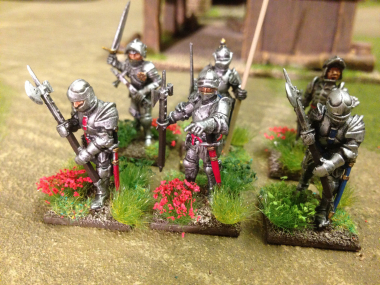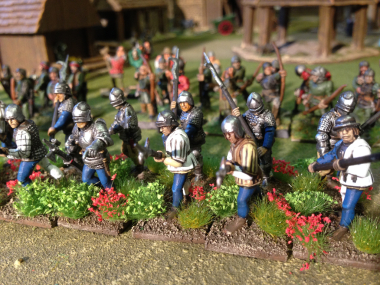 Well that was the question I asked myself when putting together my Lion Rampant retinue. With just 6 men in the unit, an armour value of 1 ( 2 when shot at) and a points value of 2, I couldn’t see why I would bother having these in my retinue. The fact was that I had never heard of a Bidower before, come to that, neither has Wickipedia. A google search revealed the following link, which was sort of useful:
Well that was the question I asked myself when putting together my Lion Rampant retinue. With just 6 men in the unit, an armour value of 1 ( 2 when shot at) and a points value of 2, I couldn’t see why I would bother having these in my retinue. The fact was that I had never heard of a Bidower before, come to that, neither has Wickipedia. A google search revealed the following link, which was sort of useful:
So why would I have them in my Lion Rampant retinue. Well, after a number of battles facing these units, I realised that despite their cheap cost, they were very useful indeed. For a start, they move on a 5+, and they move quickly, 8 inches a turn and are not slowed by rough terrain. Add to this that they can Skirmish ( shoot and move), cant be targeted from over 12 inches and have the ability to evade. If they do get caught in hand to hand they are going to be slaughtered by most units on foot. However, in rough ground they can hold their own against mounted men at arms, even dragging them into combat ( on a Fierce Charge) on equal terms.
I soon learnt that they were very useful indeed, particularly after they had badly mauled my unit of Foot knights and killed my Leader ( now named Kenny, as he seems to die in every battle) before I could close with them and finish them off. The result is that I have now included a unit of Bidowers in my army. OK, it’s another 6 men to paint but it will give me just a little bit more flexibilty in battle.
And flexibility is badly needed in my retinue. Having chosen the later English retinue from the Lion Rampant rule book, I have found that although they are good in a pitched battle, they can only fight in a tight defensive formation. The bowmen need protecting from any marauding foot or cavalry units by my Foot Knights & Sergeants. So I have made the Foot Sergeants a standard unit ( allowing them to form Schiltron) to save the 2 points need to add the Bidowers. I’ll still need to fight on the defensive & try to lure or goad my opponents to advance within arrow range but once the two expert archers get to fire they cause mayhem among most of the opposition units.
So it’s back to the battlefield tonight with my new look army to see how it can cope with the new tactics that I have planned! The picture at the top of the page shows my latest finished unit, the Foot Sergeants and here is the army that I will field tonight. The archers & bidowers are still temporary units made up from some very old figures that were kicking around in my spares box! They will need rebasing & touching up before they become permanent additions. However, the plan is to replace them with archers from the Perry’s boxed set. The next batch is on the work bench as I write!





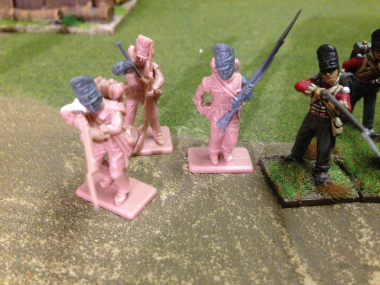
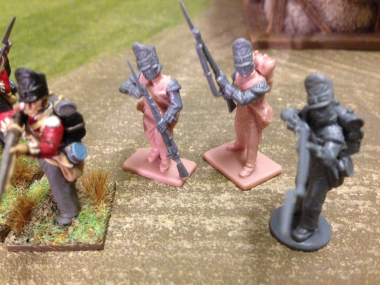

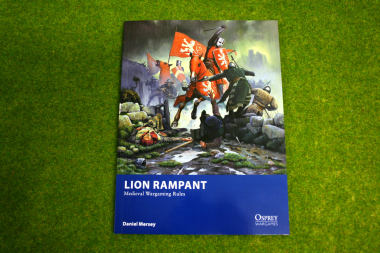 I mentioned in my blog earlier that I had signed up for the Wargames Illustrated Magazine’s Lion Rampant day, to be held on 31st January 2015. Although it seems some way off, I thought that I better start putting my retinue together and of course practicing the game. As I am somewhat focused on collecting English Armies (and their Allies!), I thought that I would start with a typical English Warband. In the LR rules this breaks down to: a unit of 6 foot men at arms; a unit of 12 ‘expert’ foot sergeants and two units of 12 ‘expert’ Bowmen; a total of 42 figures to assemble and paint.
I mentioned in my blog earlier that I had signed up for the Wargames Illustrated Magazine’s Lion Rampant day, to be held on 31st January 2015. Although it seems some way off, I thought that I better start putting my retinue together and of course practicing the game. As I am somewhat focused on collecting English Armies (and their Allies!), I thought that I would start with a typical English Warband. In the LR rules this breaks down to: a unit of 6 foot men at arms; a unit of 12 ‘expert’ foot sergeants and two units of 12 ‘expert’ Bowmen; a total of 42 figures to assemble and paint.
